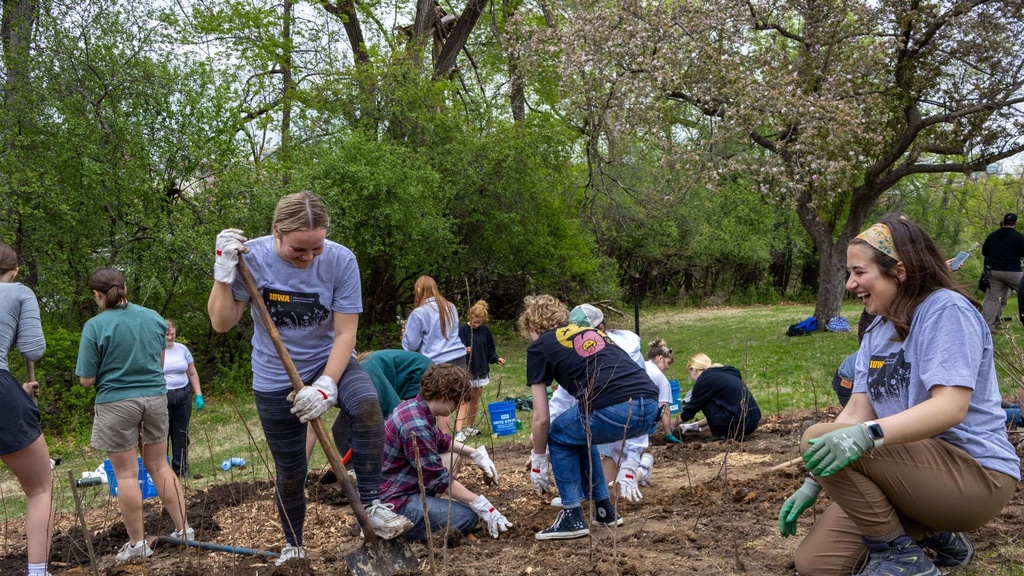What is a Living Lab?
A living lab is a dynamic space that leverages campus for experiential learning through teaching and research beyond the traditional classroom. It also fosters improved mental health and overall well-being for both campus and community members.
Where are the Living Labs?
Living labs are everywhere! They are any place on campus that can be used for teaching, learning, or research. Below are a few examples of spaces to explore.
What do Hawkeyes Say About Living Labs?
"These spaces are vital to the student experience and the success of our classes."
So Many Researchers on Campus, So Much of Campus to Research

1 in 3

31 +
1900 +
Did you know?
Spending time in greenspaces on campus improves cognitive function, reduces stress, reduces risk of cardiovascular and respiratory mortality, and reduces social isolation!
Living Labs Support the University of Iowa Strategic Plan
News

Cinematic Arts faculty immerse students in hands-on learning
Wednesday, October 22, 2025

CLAS Religious Studies faculty member brings students and community together
Wednesday, October 22, 2025

Adding More Green Space to a Campus Helps Students
Wednesday, September 3, 2025








